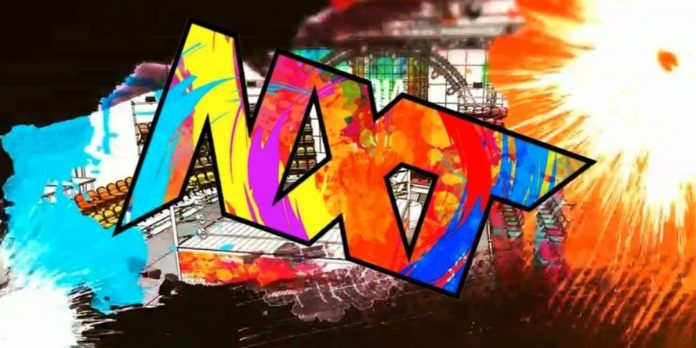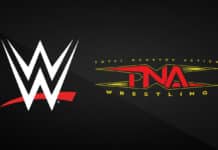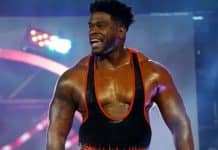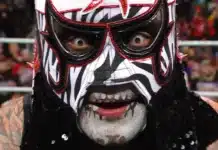
NXT 2.0 debuted on the air roughly a month ago, the revamped version of the developmental brand, and looked to shift not only the direction of the show, but also its purpose. The new NXT has yielded mixed results and at least up until this point, has looked like a rather conflicted project.
In theory, NXT was taken from its status as a third-tier brand that aimed to take a piece of the pie from All Elite Wrestling back to its original purpose of talent development, but can that really be accomplished on USA Network? As minor league as it might sound, there’s a reason that Ohio Valley Wrestling had such a golden era and produced some of the biggest stars of the today. It’s much easier for talent to make those almost necessary mistakes to learn the craft in front of small crowds with minimal exposure than to be put in front of a national television audience. Instead of a valuable learning experience to grow as a performer, relatively new talent made a first impression on such a wide scale that any negative aspects could typecast them in the view of the audience. In some ways, it’s almost unfair to expect Performance Center prospects to flourish on national television without the chance to learn on a smaller scale first. Again, it might sound like a silly comparison based on the WWE product being so global now, but it’s a good thing that Batista made rookie mistakes at spot shows in Kentucky instead of national television.
Assuming WWE brass legitimately sees potential in some of these newer competitors on the NXT 2.0 show then its almost counterproductive to put them on national television unless they have the level of experience to truly work on that platform. B-Fab and Elektra Lopez might have the potential to be stars at some point, but their match a few weeks ago just looked clumsy, spotlighting their inexperience. This is why a truly developmental brand on national television is a conflicting concept.
This speaks to the more general concept that enhancement shows, or shows that are mostly structured to feature specific stars in more or less one-sided matches, won’t work in 2021. The industry had the Attitude era, where the sizzle of the industry sold tickets to house shows, while stars vs. stars drew television ratings. The horse is out of the barn in that regard so an enhancement match on a show can get a performer over, but enhancement matches on a regular basis are a reason for the viewers to change the channel. This isn’t 1992 Superstars, Kamala beating up Dwayne Gill isn’t going to maintain an audience, particularly when there are already countless hours of programming in the modern era.
That being said, it’s clear that the focus of NXT 2.0 will be those on the show that Vince McMahon views as those that will draw money on the main roster, which makes sense, but it also sends a message about those left from the old regime. Basically, if you’re a veteran in NXT 2.0, you’re typecast as a third-tier guy that didn’t have the star power to draw big money on the main roster. Granted, that’s not to say it’s an accurate assessment of veteran talents, but when the focus of the show is on new performers, where does that leave stellar veterans like Roderick Strong, Pete Dunne, or Kyle O’Reilly?
Perhaps, that’s why Adam Cole departed from the company, because anyone from the Triple H era of NXT has more or less hit a ceiling in how far management will push them in the company.
Bron Breakker, the son of Rick Steiner, looks to be the breakout star from the brand, and if nothing else, NXT 2.0 could provide that introduction for him to generate some buzz to eventually make a big splash on the main roster. Even if that scenario is successful, it creates a bigger problem for the brand itself, if the brand is purely developmental for future stars on Raw or Smackdown then the show will continuously have its top talent sent to the main roster so again, a developmental show on USA Network is a conflicting concept. If Breakker becomes the top guy on NXT 2.0, how long is it before Vince sends him to Raw or Smackdown? With Vince and Kevin Dunn running the show, the longevity or depth of NXT 2.0 isn’t the goal, but rather the big money that could theoretically be made on the main roster. One of the very few positives about NXT 2.0 is that Breakker has the “it” factor and definitely appears to have the potential of a main event star down the road. On the flip side, nobody else from the new cast of talent looks to be close to that level.
Speaking of the optics, I understand that WWE brass wanted a new look for the show, but I’m not sure the Nickelodeon color scheme or the venue itself presents the brand as a major entity. The venue is very small and you can see the last row of bleachers during most camera angles so it’s always obvious that it’s a scaled down production. If NXT 2.0 is as perceived minor league than it’s possible that it could be more difficult for the competitors to seem like major league stars. The biggest question for any show on cable television is, can it find an audience? All things considered, NXT 2.0 hasn’t really found an audience or really done enough to clarify what demographic its attempting to draw for ratings. The established talent on the show that can go bell-to-bell cater to the more diehard fans, which will keep NXT numbers at the show level they were under the Triple H regime. At the same time, the new faces don’t have the star power to draw some of the more casual audience that watches Raw or Smackdown so what demographic is supposed to be the target audience for this show?
What do you think? Comment below with your thoughts, opinions, feedback and anything else that was raised.
Until next week
-Jim LaMotta
E mail [email protected] | You can follow me on Twitter @jimlamotta







